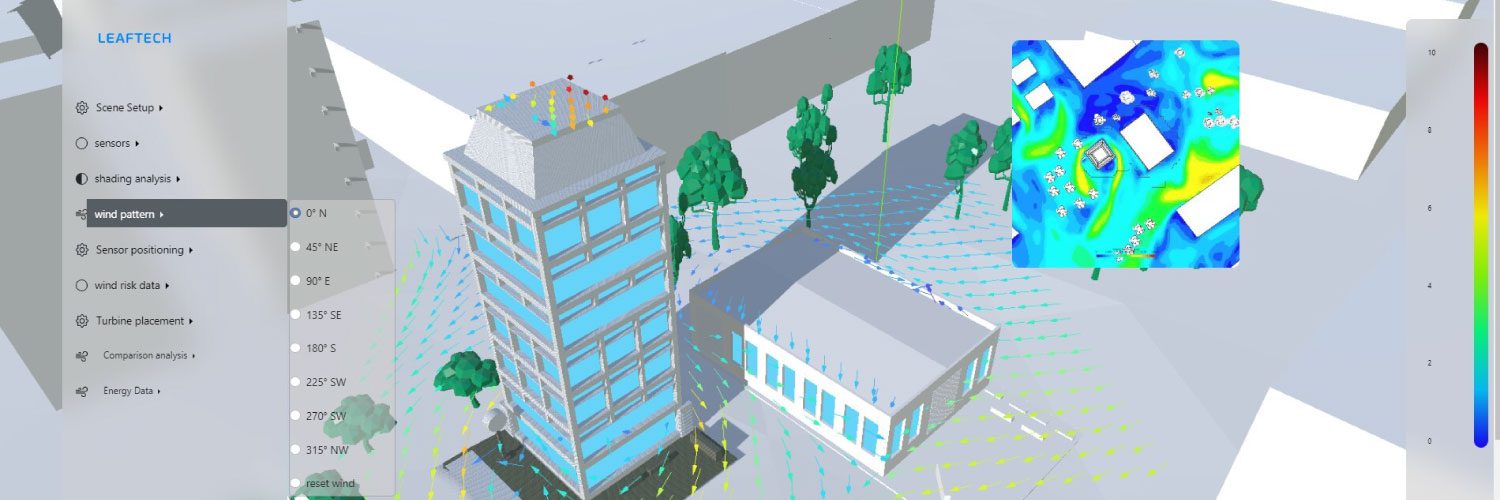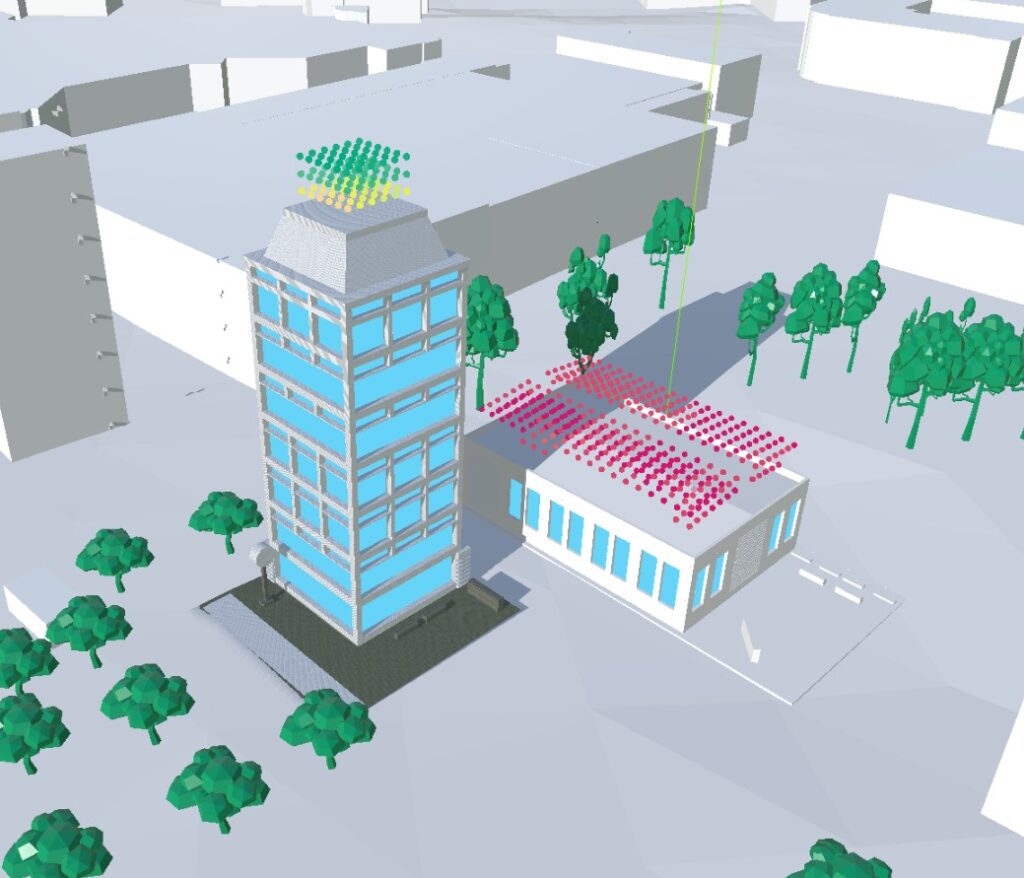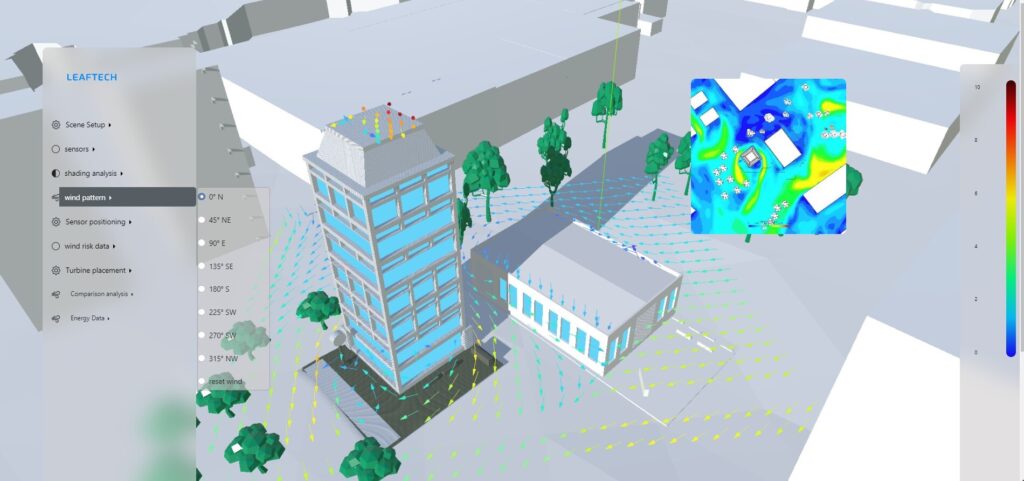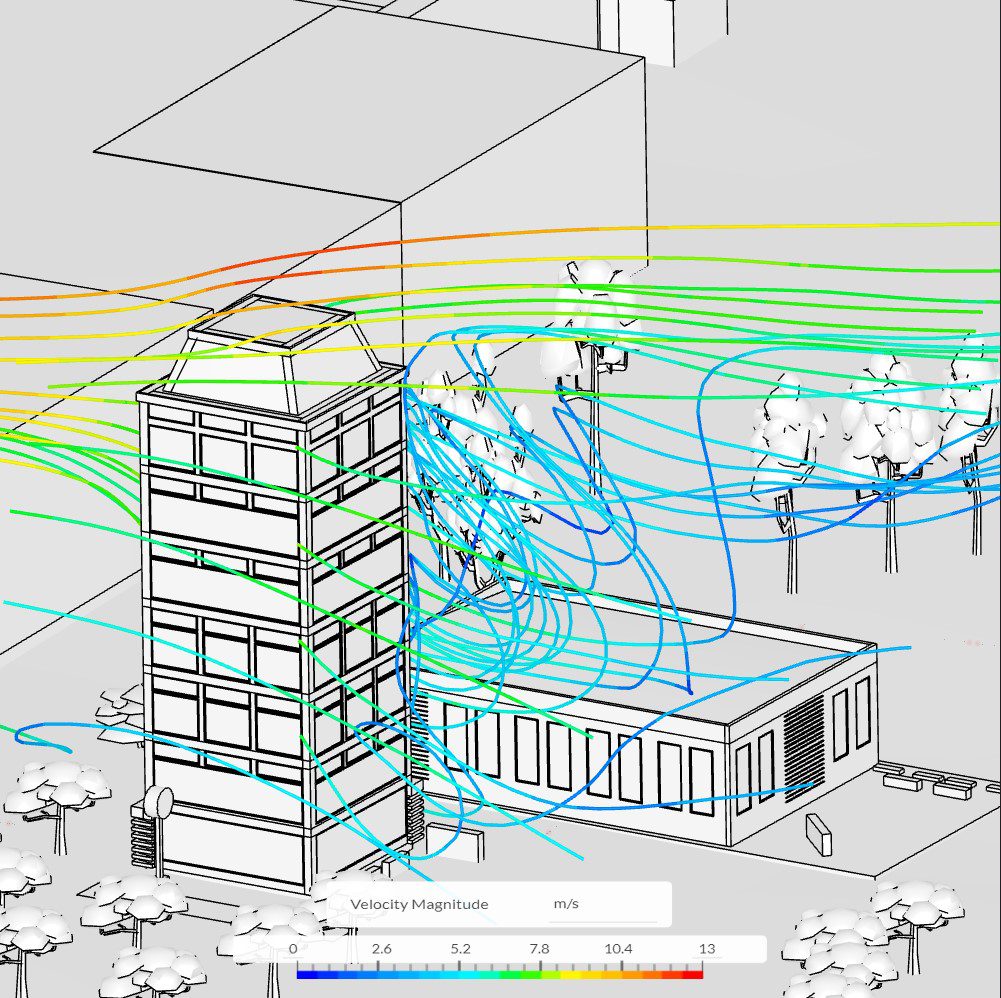
Leaftech is a specialist built environment consultancy offering proprietary digital twin technology to inform built environment design and retrofit. Clients have access to highly accurate data to understand their building’s performance, make informed decisions on upgrades, and work on the required building optimization measures. This is facilitated through the digital twin that Leaftech makes of the client buildings and portfolio. To date, Leaftech has completed 65 digital twin projects representing almost 5 million sq. ft. in built area and includes more than 4,000 building-level devices monitored from energy meters to temperature sensors from building management systems (BMS).
Digital Twin for buildings by Leaftech is a service based on highly standardized and automated sets of processes that span BIM modeling, data analytics, simulation, and control. The end results to the client building include a fully calibrated and accurate digital twin model that can be used to make data-driven recommendations for energy-saving scenarios:
Once the building model is made, it can be leveraged for multiple types of analysis including microclimate modeling. Wind studies are a critical component of the building design and planning process and must be increasingly used at the earliest stages of design. They are also used to comply with strict wind loading codes for building integrated products such as solar PV, facades, and solar shading systems.
Leaftech has been working on digital twins for five years and started as a student project back in 2014 with the company formed in 2018. The three co-founders from the Technical University of Berlin (TUB) were working on smart shading using facade-mounted PV panels and developed a novel software solution for the shading control mechanism to optimize its performance. A few years later they branched into offering building-level energy assessments, energy and thermal modeling, and designing HVAC systems leading to recommendations for energy efficiency retrofits and the associated cost/benefit analysis needed for investment decisions. Leaftech now has proprietary tools used to predict the energy performance of a building and coupled with using analysis tools like SimScale can offer a more complete solution to building owners.
The excellent compatibility between the Lattice-Boltzmann solver and Leaftech's Digital Twins has eliminated the need for any modifications in 3D models, thus significantly shortening the time and effort needed for project implementation.

Mohamad Mahdi Falahi
Mechanical Engineer at Leaftech
Leaftech uses wind simulations in SimScale for many services including analyzing:
A typical project will include calculating the wind speed and pressure coefficients in front of each window where a facade-mounted shading system is to be mounted. They will then use this to comply with the manufacturer’s wind speed rating and wind loading characteristics, which cannot be exceeded for safety reasons. Each building has a live weather station on the roof monitoring wind speed and direction, and this coupled with Leaftech’s own shading control software is used to operate the mechanical opening/closing of the shading system for optimal effect. Leaftech is using the SimScale API to extract custom data points for use in their own post-processing and analytics tools.
Leaftech imports complex CAD as STL files into SimScale. Using the lattice Boltzmann method (LBM) solver Pacefish® integrated into SimScale, this method offers extremely robust CAD handling and meshing, meaning little or no time is needed on CAD cleanup to make the geometry simulation ready. Surrounding buildings and terrain are imported similarly from a third-party map provider.
The potential danger posed by strong winds to shading systems can be addressed through the use of CFD simulations to assess the wind flow on the building’s facade. This approach is more economical than wind tunnel tests and, when coupled with Leaftech’s highly accurate digital twins, provides reliable results.


In this project, by utilizing the PWC Solver from Simscale, we were able to simulate wind flow around the buildings in the interest area in two separate scenarios, one for winter and one for summer, in sixteen directions. The results of the simulation are then used to find the ideal location for a wind sensor, which will be used to determine the behavior of the shading control system. The output of the simulation is used to create a connection between the individual shades and the sensor, making the system both efficient and secure. Linking meteorological data with SimScale simulations and Leaftech algorithms enables us to quantify the risk of high wind loads on the shading system.
Wind simulations were also utilized to identify the most suitable position for small wind turbines on the building. By taking into account the historical wind data in the area and the distribution of the wind flow velocity around the examined buildings, the spot with the highest efficiency for the chosen wind turbine, where its operations can be conducted securely, was identified.

Simulation of wind flow in urban climate is considered to be a complex and relatively large problem in which many parameters play roles. SimScale's friendly user interface, along with the parallel simulation feature of the Lattice-Boltzmann solver, has provided the ability of quick startup of simulations and has reduced the project time from days and weeks to hours and minutes.

Mohamad Mahdi Falahi
Mechanical Engineer at Leaftech
Sign up for SimScale
and start simulating now